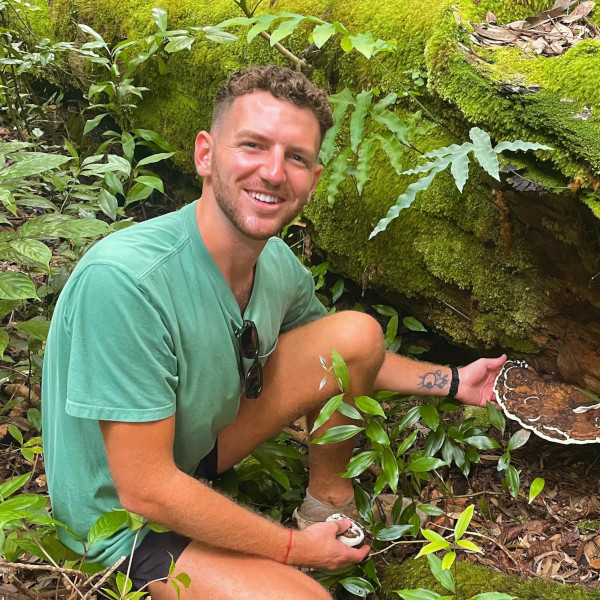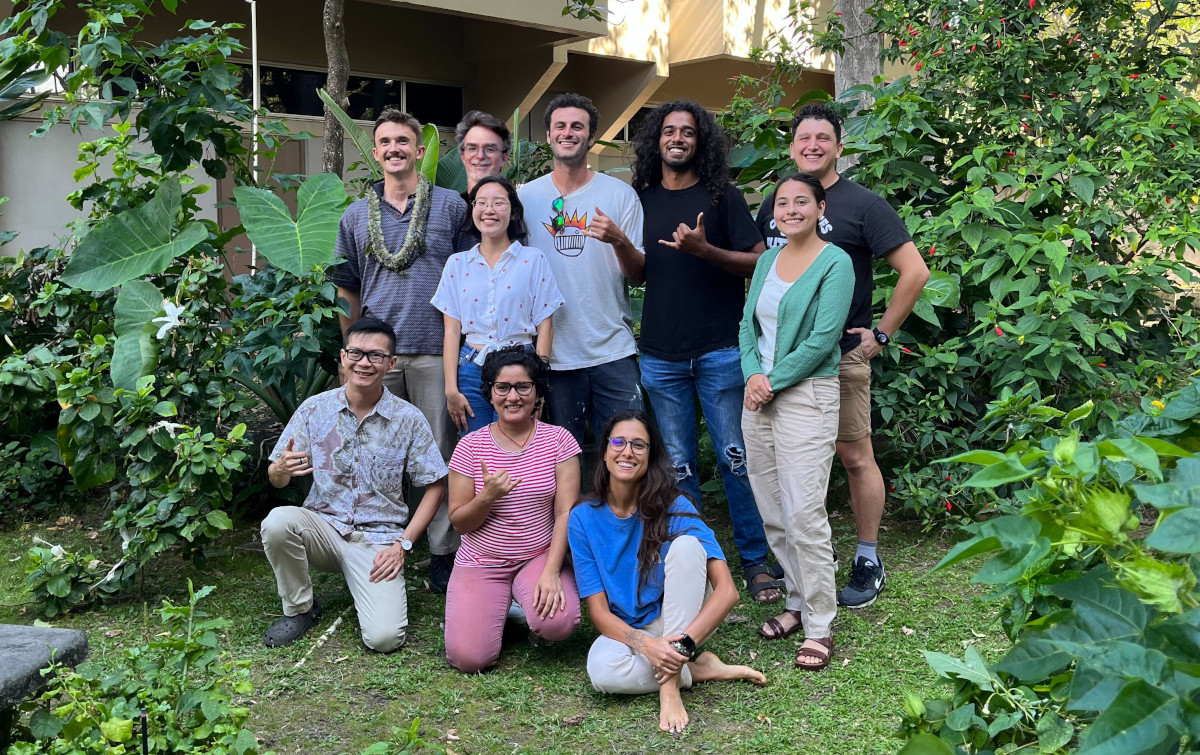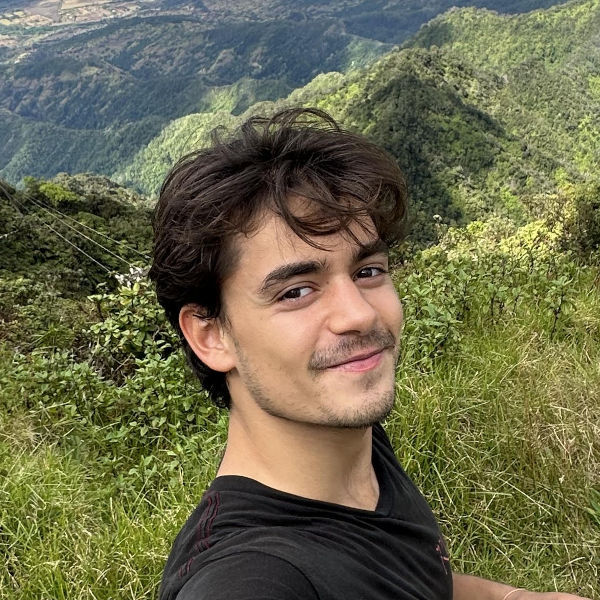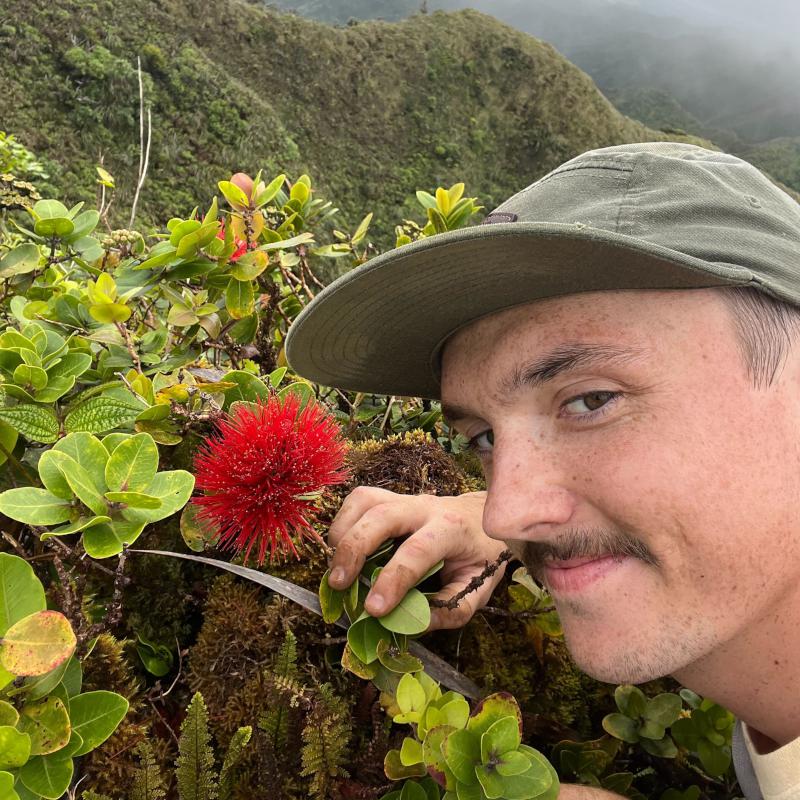


Nhu H. Nguyen
Associate Professor of Soil Microbial Ecology
Principal Investigator
Office: 221 Sherman Laboratory
Office Phone: 808-956-6593
Lab Phone: 808-956-2634
Email: nhu.nguyen@hawaii.edu





Postdocs

Giovana Slanzon
Giovana is studying fungal-bacterial interactions in agroecosystems. She is interested in how crop management systems, in particularly crop diversity, changes soil microbiomes and soil health over time. She uses advanced techniques in stable isotope probing (SIP) and network analysis to understand how carbon moves across soil niches.
Wesley Sparagon
Wesley is studying how fungal-bacterial interactions mediate the transfer for different forms of carbon across a diversity of soils. He is interested in how dissolved organic matter mediates microbiomes and their feedbacks on fundamental biogeochemical transformations that influence ecosystem function. He applies metabolomics and other ‘omics techniques to understand the complexity of soil microbial interactions.
Gaëtan Martin
Gaëtan is studying the mechanics of fungal-bacterial interactions on surfaces. He has broad interests in microbial systems and how they function. He uses microbiome and stable isotope methods to understand the pools and dynamic of carbon when fungi and bacteria interact. He is also developing methods to assess soil biodiversity.Graduate students

Ishwora Dhungana
Ishwora's Ph.D. dissertation research is focused on the interactions between plant roots, soil fungi and bacteria and their contributions to phosphorus solubilization in tropical soils. Her M.S. thesis work examined how different crop species and their root exudates interacts and changes microbial communities structure and functioning in soil.
Rishi Prasadh
Rishi's M.S. thesis research is focused on understanding the dynamics and fate of microbial extracellular polymeric substances (EPS) in the rhizosphere and hyphosphere of fungi in tropical soils. He uses various biochemical and microbiological techniques to answer these questions.Undergraduate students

Viviana Gaytan
Viviana is studying how fungi and bacteria biomineralize and decompose calcium and manganese metals, with an aim to find ways to remediate manganese toxicity in the soils in Hawaiʻi. She is also collections manager of our lab's Fungarium.
Angelina Spicer
Angie is studying how different fungal species expand their mycelium in soil. She is also working on isolation of yeasts and use their fermentative potentials to make specialty coffee.
Luke Amerine
Luke is developing molecular techniques to characterize the diversity of mushrooms in Hawaiʻi.A reverse longitudinal record of the lab





Former lab members
In reverse chronological order...

Christian Fullmer
Christian's M.S. thesis looked deep into the fungi and bacteria that live in deep andic (volcanic ash) soils. He examined the connections between these microbes and mineral associated soil organic matter that form extremely stable aggregates. He uses molecular ecology, biogeochemistry, and classical soils methods to tease apart and understand these interactions. He graduated with an MS degree May 2024 and continued doing soils research in an academic environment.
Augie Rodegerdt
Augie spent his last semester in the lab phenotyping maize and their roots. He received a B.S. in 2023.
Quinn Moon
Quinn was graduating but had some time during his last semester so he joined the lab to help phenotype maize roots. He received a B.S. in 2023 and went onto graduate school with Tim James at the University of Michigan. Quinn was in the lab from January 2023 to May 2023.
Caio Pires de Paula César
Caio was a visiting scholar from the Biology Centre of the Czech Academy of Sciences is visiting the lab to learn ways to study fungal-bacterial interactions. He was in the lab in May 2023.
Makana Ioh
Makana studied how interactions with fungi can change antibiotic resistance of soil bacteria. Her research was partially supported by the Undergraduate Research Opportunities Program (UROP) and culminated in a Senior Honors Thesis, which received the Senior Honors Thesis Award for one of the three best theses at UH Manoa in the graduating class of 2023! Makana graduated in Spring 2023. She continued her studies in a post-baccalaureate program at the National Institute of Health. She was in the lab from January 2021 to May 2023.
Sophia Lee
Sophia is helped to develop high-throughput methods for cultivating bacteria associated with soil fungi and characterizing them using molecular methods. She used these methods to isolate and study oxalotrophic soil bacteria. Sophia was in the lab from February 2020 to February 2023. She graduated with a BS in 2023.
Laurens Stouthart
Laurens visited the lab as an undergraduate intern from Hogeschool Leiden, The Netherlands. He used his substantial skills in molecular biology to study oxalotrophic bacteria associated with fungi. He also refined methods for long-read sequencing of fungal genomes. He was in the lab from March 2022 - March 2023.
Karen Parada
Karen initiated a study of the fungi and bacteria across a natural to urban soil gradient on O'ahu using both culturing and molecular techniques. She eventually discovered that our lab's approach and expectations to graduate training did not match hers and thus was not her right path. She was in the lab from August 2021 - January 2023.
Andrew Lin
Andrew cultivated soil bacteria and helped to develop high-throughput molecular techniques identify antibiotic resistant bacteria in the soil across the Waimea Ahupuaʻa (watershed). He is also a pro at building amplicon libraries for Illumina sequencing. Andrew graduated in Spring 2022 with a BS in Microbiology. He attending medical school. He was in the lab from January 2021 to January 2023.
Kiana Rich
Kiana graduated with a BS in Tropical Agriculture and the Environment at UH Mānoa in December 2022. Before she graduated, she spent time in the lab studying how fungi and bacteria coexists in soil. On the side, she worked with TPSS graduate student Juli Burden to isolate wild yeasts in coffee flowers to produce coffee-flower yeast ferments with flavorful results.
Maya Montoya-Pimolwatana
Maya started in the lab as an intern and learned to analyze the gut microbiomes (fungi and bacteria) of arthropods that occur across our Waimea watershed model ecosystem. She went on to graduate school in the Department of Plant and Environmental Protection Sciences at UH Mānoa studying insect gut microbiome.
Ricky Lewis
Rick joined the lab as a postdoc in the middle of the pandemic. He developed high-throughput molecular methods to characterize soil biodiversity, and use these methods understand how different agricultural management systems, soils, and nutrient mineralization affects soil biodiversity. He brought great new ways to analyze microbiome data to the lab. On the side, he worked on cacao phyllosphere and ferment microbiomes. Rick was in the lab from August 2020 to May 2022.
Roxanne Main
Roxanne used molecular methods to barcode the lab's mushroom collection, with a particular focus on the fungi of Hawaiʻi.
Ashlyn Takamiya
Ashlyn worked in the lab for 2 semesters as an intern for her undergraduate program. She used molecular methods to identify bacteria responsible for nitrogen mineralization in various soils in the state.
Raphaela Che
Raphaela joined the lab for a semester as an intern for her undergraduate program. She learned to prepare high-throughput Illimuna sequencing libraries to characterize the fungal diversity across different Hawaiian soil types and land use. Her work will contribute to our understanding of soil health. She graduated in Spring 2020 and continued onto nursing school.
Christopher Kim
Christopher explored topics in symbiotic relationships between soil fungi (including mycorrhizal fungi) and bacteria, and how these symbioses impact the soil ecosystem.
Talyssa Topacio
Talyssa was a visiting summer 2019 REU student. She worked working on yeasts associated with cacao fermentation and whether the fermentation process reduces phenolics in cacao pods. Her work contributed to the understanding on how microbes might contribute to the terroir of Hawaiʻi grown chocolates. Talyssa started graduate school at UC Riverside in Fall 2019.
Cade Justad-Sandberg
Cade was a visiting summer 2019 REU student. He worked on nectar yeasts of native and non-native Hibiscus species, with a focus on characterizing native yeast species using DNA. He continued onto an internship with NASA after graduation.
Brennan Hee
Brennan worked on inventorying litter arthropods of Waimaea Valley. The microbiome from these organisms eventually was sequenced to understand the diversity of microbes in Waimea Valley.
Conor Palmer
Conor worked on developing a system for growing an edible tropical mushrooms using locally sourced substrate. He worked with various genotypes of the fungus to produce a Hawaiʻi relevant strain that maximizes production.
Steven Heisey
Steven was the first graduate student who joined the lab in 2018. He used integrated molecular microbial and biogeochemical techniques to study the nutrient flow associated with organic and inorganic soil amendments. Steven contributed to the lab's toolbox to use network analysis to hypothesize interactions across different domains of life, and developed high-throughput sequencing primers to effectively assess nematode biodiversity in diverse Hawaiian soils. He wore a relevant lei while defending his MS Thesis. He graduated with an MS degree August 2019, and after a couple of months of working in the lab as a tech, worked for the NRCS.
Jon Abe
Jon was one of the first undergraduates to join the lab, starting March 2017 where he conducted research characterizing the diversity of rhizobia in native and non-native legumes in Hawaiʻi. He isolated and used molecular methods to identify legume-nodulating bacteria, created a culture collection, and produced a protocol to inoculate native wiliwili (Erythrina sandwicensis) seedlings. His research was partially supported by the Undergraduate Research Opportunities Program (UROP) and culminated in a Senior Honors Thesis, a Senior Honors Project Award for best thesis in the natural science category, a provisional patent, and a peer-reviewed publication! Jon graduated in Spring 2020 and continued on to medical school afterwards.